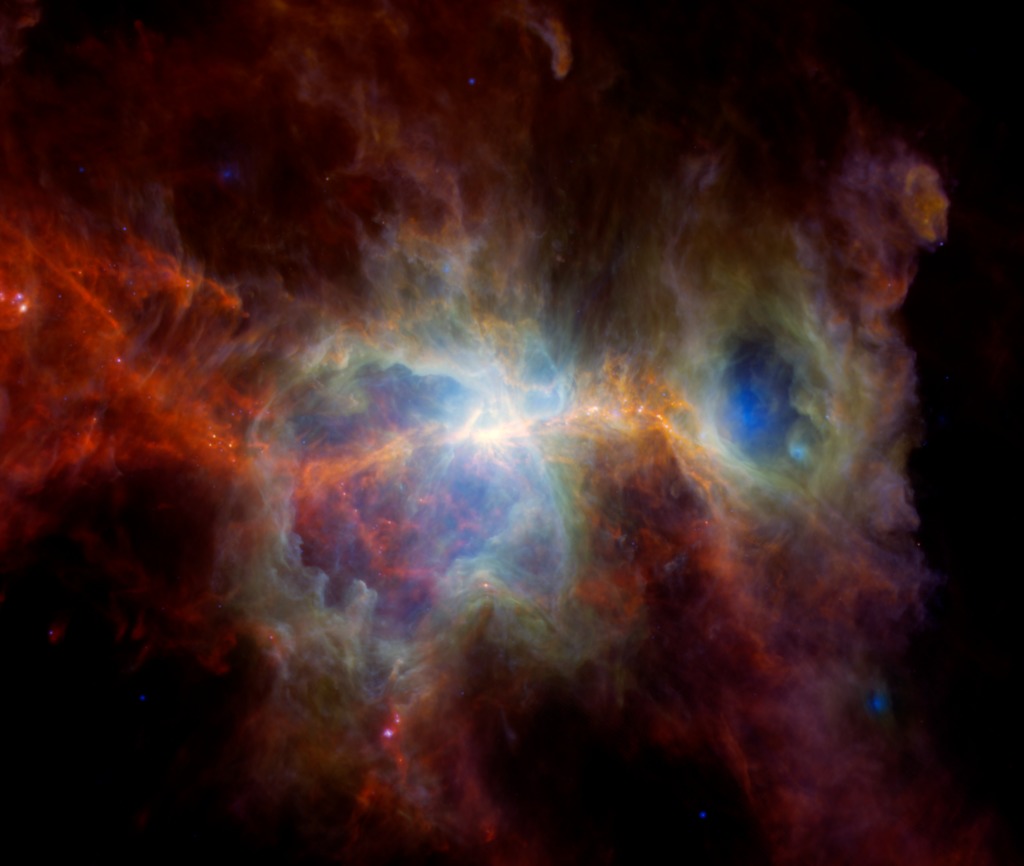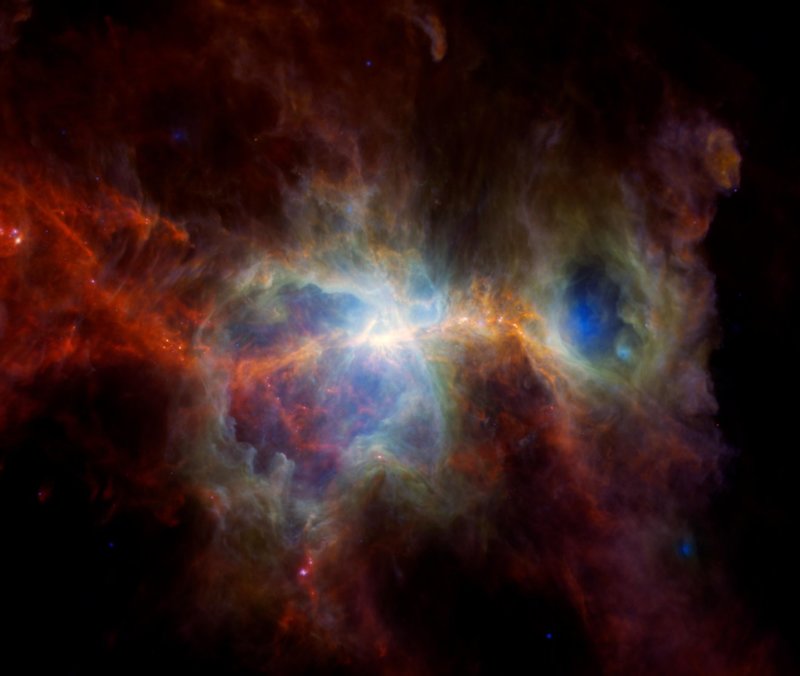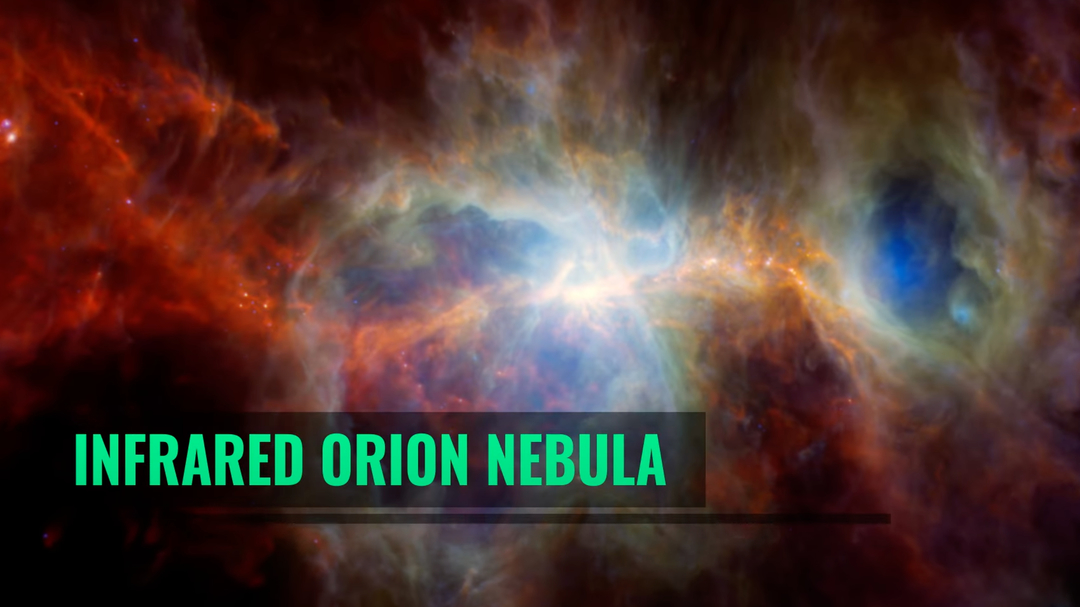
Credit: NASA/JPL-Caltech/ESA/Hershel
Observation • November 22nd, 2022 • ssc2022-07a
ssc2022-07a
This new image of the Orion Nebula produced using previously released data from three telescopes shows two enormous caverns carved out by unseen giant stars that can release up to a million times more light than our Sun. All that radiation breaks apart dust grains there, helping to create the pair of cavities. Much of the remaining dust is swept away when the stars produce wind or when they die explosive deaths as supernovae.
This infrared image shows dust but no stars.
Blue light indicates warm dust heated by unseen massive stars. Observed in infrared light – a range of wavelengths outside what human eyes can detect – the views were provided by NASA’s retired Spitzer Space Telescope and the Wide-Field Infrared Survey Explorer (WISE), which now operates under the moniker NEOWISE. Spitzer and WISE were both managed by NASA’s Jet Propulsion Laboratory in Southern California, which is a division of Caltech.
Around the edge of the two cavernous regions, the dust that appears green is slightly cooler. Red indicates cold dust that reaches temperatures of about minus 440 Fahrenheit (minus 260 Celsius). The cold dust appears mostly on the outskirts of the dust cloud, away from the regions where stars form. The red and green light shows data from the now-retired Herschel Space Telescope, an ESA (European Space Agency) observatory that captured wavelengths in the far-infrared and microwave ranges, where cold dust radiates.
In between the two hollow regions are orange filaments where dust condenses and forms new stars. Over time, these filaments may produce new giant stars that will once again reshape the region.
About the Object
- Name
- Orion Nebula • M42 • NGC 1976
- Type
- Nebula > Type > Star Formation
- Distance
- 1,450 Light Years
Color Mapping
| Band | Wavelength | Telescope |
| Infrared | 24.0 µm | Spitzer MIPS |
| Infrared | 22.0 µm | WISE |
| Infrared | 100.0 µm | Herschel PACS |
| Infrared | 160.0 µm | Herschel PACS |
| Infrared | 250.0 µm | Herschel SPIRE |
Astrometrics
- Position ()
- RA =5h 35m 14.8s
- Dec = -5° 20' 13.0"
- Field of View
- 2.4 x 2.4 degrees
- Orientation
- North is 90.0° right of vertical






